If you have been reading FNY for awhile you know I’m fascinated with the patterns produced by Queens’ occasionally wacko street numbering system (and I also speculate what it would have been like had the streets not been numbered, and colorful old names were retained. Some have been, and I will highlight those on a future page.
Beginning in 1915, NYC decided to number most of Queens’ streets to repair confusion that had sprung up. In effect, the city created a different kind of confusion, but in 1915 it seemed like a good idea. Beginning with European habitation beginning in the 1600s, a handful of major hubs such as Jamaica and Flushing had sprung up but Queens remained a county consisting of small towns here and there, connected by mostly dirt wagon traces — major roads were rare. Many of these small hamlets had their own numbering systems, and many had names like Main, Washington, Lincoln, and plant names — the kind you find in small towns everywhere.
So after Queens was annexed by NYC in 1898 and these small towns became more heavily urbanized, and farms were moving out and houses and businesses were moving in between them, the city decided to institute a uniform numbering system. However, a perfect grid, like the one in Manhattan and large stretches of Brooklyn, just couldn’t be accomplished in the sprawling county of Queens. It couldn’t be tamed that way, with uneven coastlines and hilly areas. So a specialized plan had to be implemented to make sure that a 60th Avenue, say, would be on the same latitude across the borough, generally speaking, and 60th Street would be on the same longitude.
In many cases, that meant skipping numbers. In Astoria, for example, to keep the old Van Alst Avenue as 21st Street all the way north and south, there are no 15th, 16th, 17th Streets, and 18th and 19th appear only in the far north near Astoria Park. Indeed, in the Hunters Point area we go from 5th Street to Vernon Blvd. (which kept its name) to 11th to 21st Street.
But often there were more streets than necessary, not fewer. So numbered streets other than Avenues and Streets had to be added. For east-west streets the pattern is that the first in the series is always Avenue, followed by Road, Drive, Court and Terrace. For north-south streets, it’s Street, followed by Place and then by Lane. In special cases with weird street layouts, like Fresh Meadows, Crescent and Circle were added into the mix.
This system presented occasions for maximum confusion when the same numbers would be encountered in the plan. This sort of thing happens on occasion in Manhattan (1st Avenue and East 1st and 2nd Avenue and East 2nd Streets meet in the East Village) and in Park Slope in Brooklyn, where 3rd Avenue meets 3rd Street, and so forth. But things are pretty simplified there because there are no Roads, Drives and Places to contend with.
Queens is a different bird because there are hundreds of opportunites for the Clash of the Same Numbers to arise. Fortunately, though, it doesn’t happen as often as you think.
Single numbered Avenues (etc.) occur only in Whitestone, so they don’t meet the single numbered Streets (etc.) in Astoria and Hunters Point. Ditto for the Teens. There’s a 20/20 corner, and 21st Street meets Avenue, Road and Drive in northern Astoria. 23/23, 24/24, 30/30, 34/34, 35/35, 36/36, 37/37, as well. In Sunnyside, 43rd Avenue meets 43rd Street, and there’s 47/47 and 48/48. And then, there’s Maspeth, and the concept goes nuts.
56th Road, 56th Street and 56th Drive come together by the LIRR railroad tracks, and 56th Terrace is nearby. 58th Street encounters 58th Avenue and Road, as does 58th Place. 59th Street and 59th Place meet 59th Drive.
But as for 60 … juts about every combination is accounted for. I took a walk around and inspected the Land Where Every Street is Named Sixty.
6oth Avenue and 60th Lane
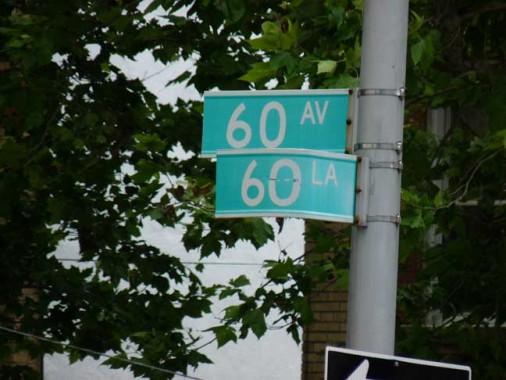
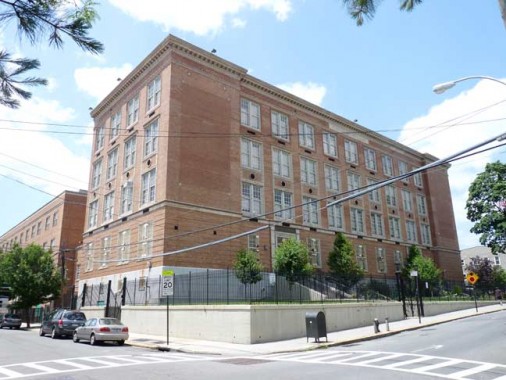
PS 153 takes up the east side of the block on 60th Lane between 60th Avenue and 60th Road.
60th Road and 60th Lane
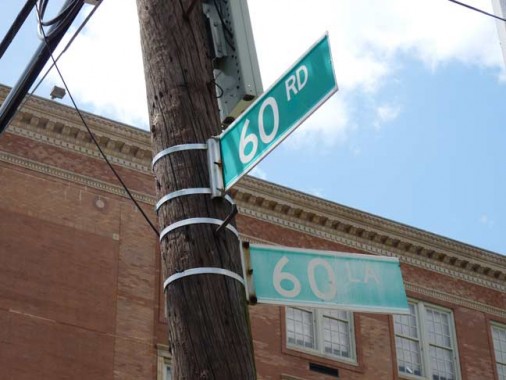
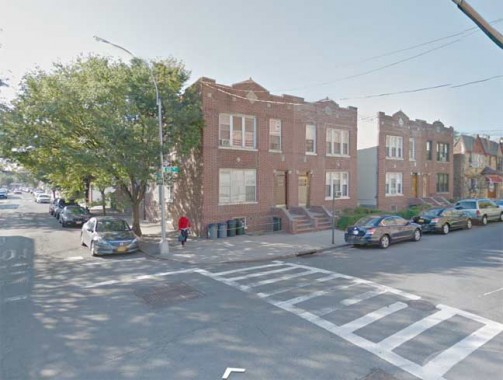
Some pleasant-looking attached brick homes can be seen at this interesection.
60th Drive and 60th Lane
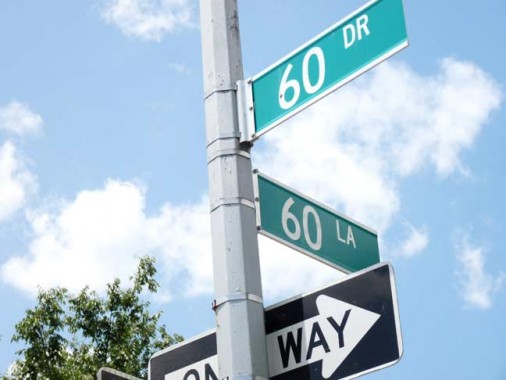
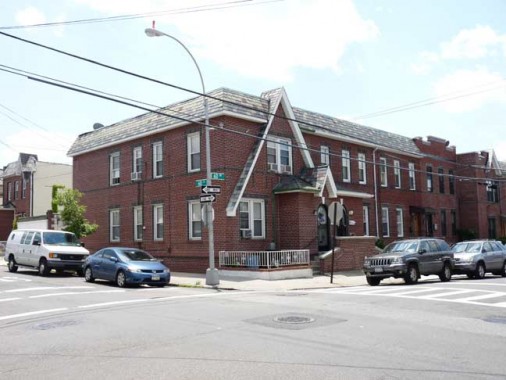
Some more houses, cut from the same mold.
Heading west on 60th Drive…
60th Drive and 60th Place
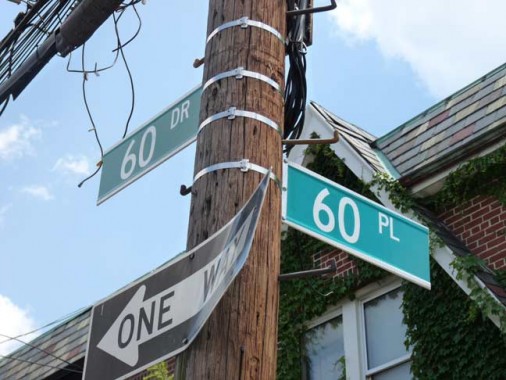
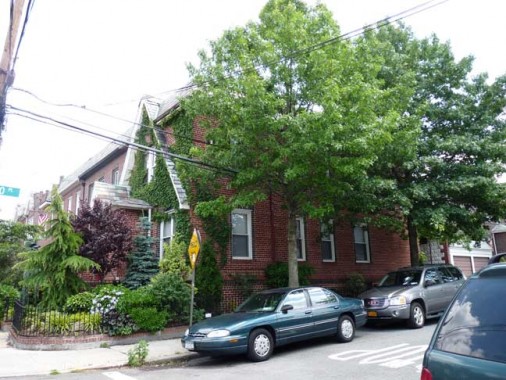
A pair of very short streets help to complete the picture. 60th Drive encounters 60th Place, where one of the same houses seen above has a luxuriously green front yard. Heading south on 60th Place…
60th Place and 60th Court
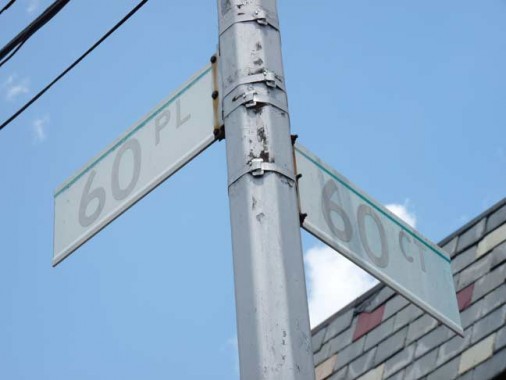
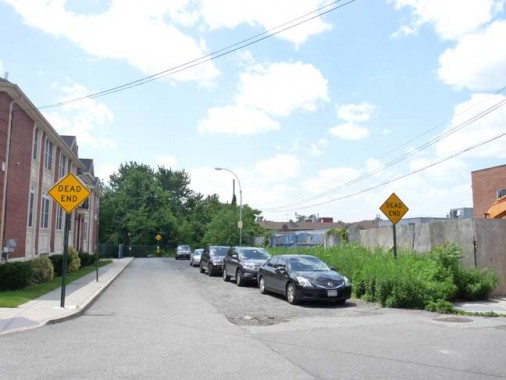
… a pair of sun-bleached signs announce the presence of dead-end 60th Court, which we’ll see again. 60th Place is a dead end too, since it has no outlet. Heading back up 60th Place and to 60th Drive again…
60th Drive and 60th Street
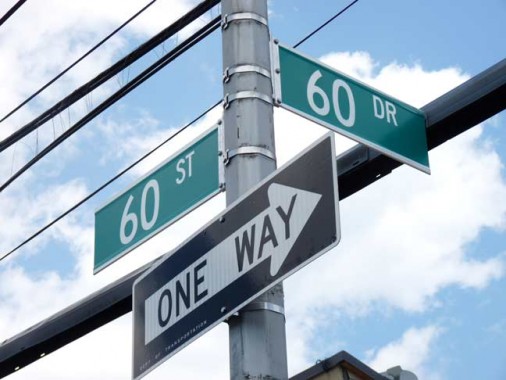
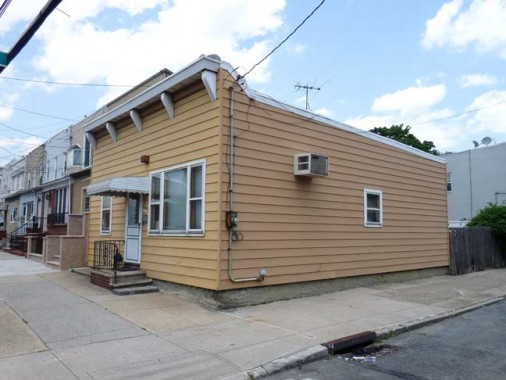
…at 60th Drive and 60th Street is a small house of likely great age, coated in siding. We head south on 60th Street, which bridges over Long Island Rail Road tracks, and encounter likely the most interesting item on this Walk of Sixties.
60th Street and 60th Court
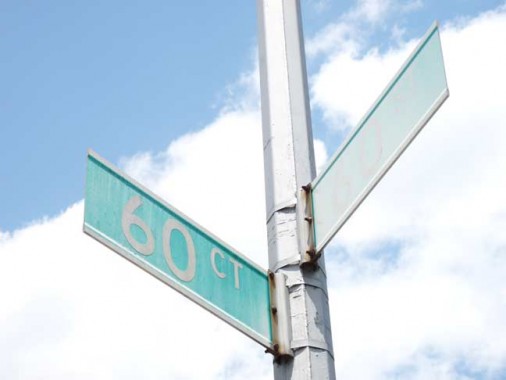
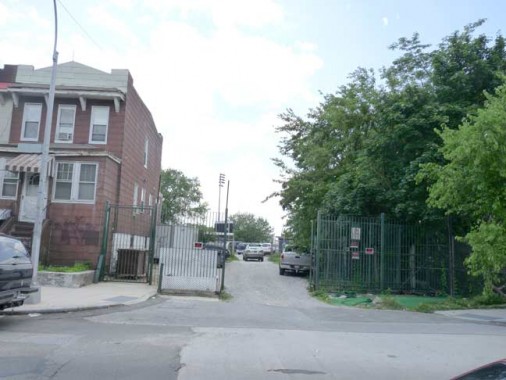
60th Court, off 60th Street, is a short gravel court that seems to lead past a couple of Dumpsters®. But give this little alley a chance. Riches await you.
Metropolitan Oval
It seems almost too good to be true: a picturesque and well-maintained soccer field featuring terrific matches every week with the spectacular skyline of midtown Manhattan as the backdrop. On a gravel path called 60th Court west of 60th Street, next to the Long Island Rail Road tracks, you will find one of Queens’ — and indeed New York City’s — most overlooked treasures.
The Metropolitan Oval has been used continuously for soccer since 1925. Soccer greats Tony Meola, Werner Roth, Tab Ramos and Edson Nascimento (Pele’s son) have all called Metropolitan Oval their home field at one time or another. The field is a U.S. Soccer Development Academy and seeks to develop the best young soccer talent in the region. The field hosts up to 20 games per week and is the home field for a number of local college teams.
Met Oval had fallen into decrepitude and disrepair a few years ago (even now, it’s practically invisible from the street and you have to walk past a few dumpsters to reach the entrance) but half a million dollars from the U.S. Soccer Foundation and Nike turned it around, providing it with FieldTurf, a state-of-the-art playing surface.
Heading north again on 60th Street…
60th Street and 60th Road
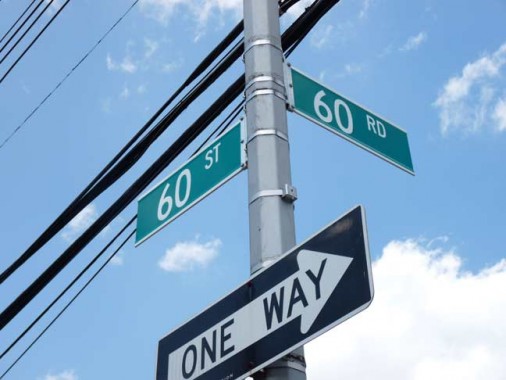
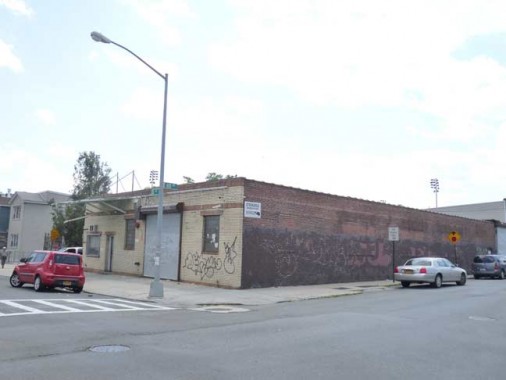
At 60th Street and 60th Road, nothing much to write home to Mother about, just a one-story warehouse. But…
60th Street and 60th Avenue
On the SE corner is the compact brick Trinity-St. Andrew’s Evangelical Lutheran Church, constructed in 1940. The address is 60-06 60th Street, and don’t tell me that’s random.
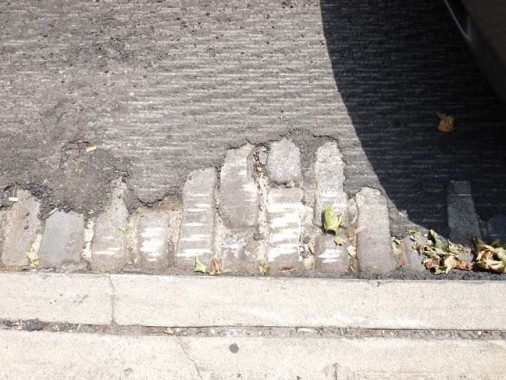
60th Avenue has been scraped in anticipation of a new street pavement. That means that this bit of original paving stones has been exposed, but will soon be covered up again.
60th Avenue and 60th Place

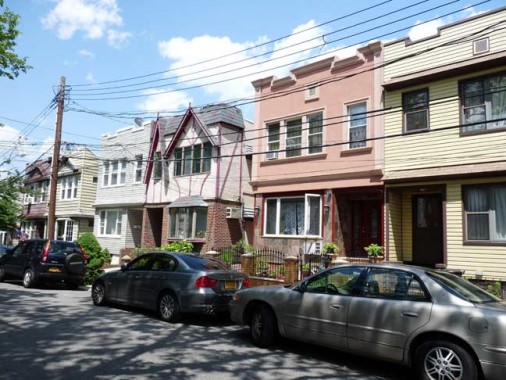
60th Place is a short Lane between 59th Drive and 60th Avenue lined with pairs of residential buildings separated by driveways.
The axis of like-numbered encounters continues in a general southeast direction in Queens. 62nd Street meets both 62nd Avenue and Road. There’s 70/70, 77/77 and 78/78 encounters in Glendale. Then the action shifts south of Forest Park to Woodhaven and Ozone Park, where 85th Avenue, Road and Drive all meet 85th Street. There’s an 86/86 meeting, 88/88, 89/89, 91/91, 95/95, 97/97, 101/101, 103/103, 107/107, 109/109, 111/111 (six same digits is the most in a NYC intersection), and near Kennedy Airport there’s a 131/131, 133/133 and 135/135. And that’s it — the number combinations don’t encounter each other south of that.
UPDATE 6/28/13: I forgot about Brooklyn, where in Brighton Beach there’s a nearly unparseable group of numbered Brighton Streets — some of which are mere walkways and all of which used to have names.
The largest number intersection in NYC is in Rosedale, where 149th Road meets 259th Street, making 408. The smallest is the aformentioned 1st Avenue and East 1st in Manhattan, making 2.
6/23/13

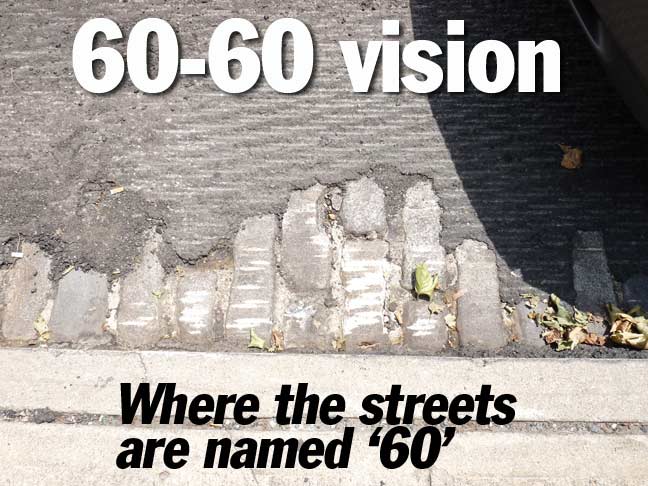

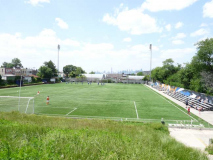
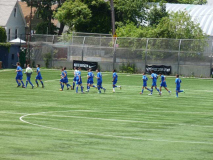
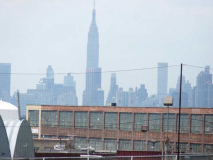
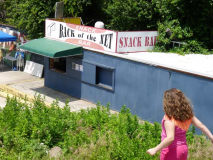
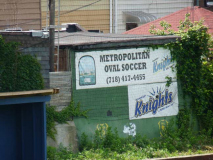
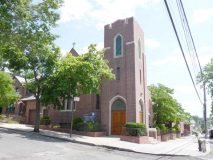
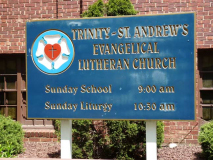
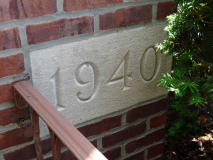
33 comments
I had always wondered about the house numbers in Queens — thanks for the explanation!
That’s sure a lot of “60”s. But a Metropolitan Oval in Queens? I knew there was a Metropolitan Avenue, but figured “Metropolitan Oval” could only mean Parkchester. Live and learn.
The 60’s live.
Must be a lot of aging hippies there.
The Shrubber is the only regular commenter to both FNY and Gothamist.
As the migration over to numbers happened, I wonder if the answer to this question is known: Why were some blocks of streets skipped or, even more curious–why were some streets not numbered (i.e. they retained their “old” names) even as all of the streets around them were “numberfied”?
Forest Hills itself has an example of each, with the alphabetic sequence of Austin, Burns, Clyde, etc. going all the way down to Walnut (Metropolitan Ave, the major thoroughfare, not withstanding) with a few letters later in the sequence either skipped or these streets perhaps lost to development over time. It appears the streets in the Gardens are owned by Forest Hills Gardens Corporation, thus exempting them from squencing–but then why not pick up or start the numbering where the Gardens ends (Groton or Harrow)? Then there’s Jewel Ave., which itself was part of a lettered sequence that I saw referenced in a book that started with “Atom” as 75 Ave (by recollection). As everything else was numbered, Jewel alone retained the name instead of becoming 69 Dr.
Forest Hills was originally private or semiprivate, and as such, kept the names; ditto Douglaston. There are number of clusters of streets named in alphabetical order scattered around, and i think they kept heir names because they run diagonally to the grid (see Elmhurst) and couldn’t be easily shoe horned into the numerical system.
As for Jewel Avenue it alone went through Flushing Meadows, so it stood apart and was allowed to keep its name.
Looking in the rear view mirror of life, is 60 / 60 hindsight three times better?
Fascinating. I get lost there all the time!
Of further interest are the Elmhurst “Alphabet” streets where I grew up: Aske, Benham, Case, Denman, Elbertson, Forley, Gleane, Hampton, Ithaca, Judge, Ketcham Pl., Layton, Macnish. All are Streets, except for Ketcham, and the set terminates at Broadway.
Weren’t you the Pastor at Colonial Church of Bayside (where we knew you as Pastor Doug) from about 1998 -2001?
If you look closely at Hagstrom maps of Queens, you’ll find little clumps of alphabetically-named streets, obviously part of some development.
This was a fascinating little tour…I did not realize there was a theory behind Queens repeating those enumerations on streets.
Also in the oval department was Eintracht Oval, a long time soccer stadium at 37th st and 20th avenue, replaced in the early 60’s? by (of course) a shopping area with a Shop-Rite (now Best Yet). Teams that played at Metropolitan Oval probably played at Eintracht as well-I believe it was the German-American Soccer League. I have only found one photo of this-in the GAHS archives. Might make a great piece for FNY but the historical pickings may be slim.
Manhattan has the intersection of West 4th Street and West 12th Street. That’s still the strangest intersection in the City to me.
There’s also West 4th @ West 13th.
And by no means forget the nearby intersection of Waverly Pl. and Waverly Pl.
West 4th St. intersects W. 10th and W. 11th as well. What’s more, it appears that it intersects 8th Ave. about where you would expect W. 12th St. to be. Also, up in Harlem, there are the intersections of 126th St. with 127th St., and of 125th St. with 129th.
THose number streets in the Village originally had names, but in the 1800s it was decided to extend 4th, 10th, 11th and 12th west. 4th was a special case because the street it replaced, Asylum, went NW instead of SW, creating the odd intersections.
There’s also the fun intersection of Ave S and Ave T in Mill Basin in Brooklyn.
Kew Gardens Hills, specifically the area of Main Street between Queens College and Union Turnpike, has the greatest variety of repeated names for streets (71st Avenue, 71st Road, etc.). Main Street runs north to south. You have there a few Drives in addition to the Avenues and Roads and this continues till 89 Avenue. The funny thing is: 74th anything is missing! I think that the explanation to this is that Kew Gardens Hills is one of the newer communities mostly built after World War II and the grid did not expect such short streets along Main Street. You can see on a map that east of 164th Street (Fresh Meadows), the street names stop duplicating because the oval is smaller there and the North-South streets are a little longer.
thank you kevin! i grew up in south queens and lived in the flushing area later on, and i could never explain it to people who didnt understand WHY queens has all those same iterations of street #s. there are of course still some named streets: francis lewis, willets pt blv, union street… but the numbering system doesnt prevent visitors from getting really lost.
There are 10 such intersections. The only combinations that are missing is 60th Place @ 60th Road, and 60th Court @ 60th Lane.
What I find weird is that they have an intersecton of 135th Street @135th Avenue, all the way near JFK Airport.
Wait a minute, 135th @ 135th is explained above. Never mind!
Other exceptions to the numbering streets are found in Malba, a good part of downtown and the Kissena Park sections of Flushing, Kew Gardens, Jamaica Estates, Holliswood and Hollis Hills. Many of the Street names in Flushing were allowed to keep their names because of their historic association being named after prominent families such as Sanford, Parsons, Prince, Bowne, Farrington, Lawrence (aka College Point Blvd), Murray, etc, as well as the “flower streets” of Kissena Park which recall Flushing’s famous former nurseries which were some of the oldest and most famous in the country. As for the other communities, their hillly terrain and curvilinear streets did not easily conform to the street naming “grid”. In addition, I believe that the realty development companies from a marketing standpoint preferrred the euphonious “named” streets to attract a more upscale clientele who had to compete with the suburbs outside the city which usually had naming street schemes, and thus convinced city officials to have their way in naming their streets in their developments.
Brooklyn did something different when it laid out its street grid (a lot earlier than Queens). Where the grid angled to follow the shoreline of the harbor a gap appeared between 16th and 17th Streets; this gap broadened into a pie shape toward the southeast. Three interim streets were laid out to fill the gap between 16th and 17th but were named not numbered: Middle Street (now Prospect Avenue), Braxton Street (now Windsor Place) and Sherman Street. Using the Queens system, Windsor Place would be 16th Place, Sherman would be 16th Lane and Prospect Avenue would be 16th something else.
Also in the Marine Park area. Marine Pkwy. was originally East 30th St (sometime before the 1950’s). Beginning with Avenue P, the numbers increase at about 25 per block beginning at 2900, until the numbered streets catch up.
My boyhood friend Alan Gutentag’s father was one of the first TV repairmen in the city, and was headquartered in, IIRC, Jackson Heights. During the 1950’s, there were still many undeveloped areas of Queens, particularly in the southeast towards Jamaica Bay. Typically, a few blocks existed of the numbered streets, interrupted by tall swamp grass, and the residents where he made house calls were apparently confused by the numbering system. I can still hear him telling me, in his German accent, “They don’t know where they live!”.
A few months ago, at a flea market here in Manhattan, I ran across a set of four large mounted maps detailing someone’s plan to do a similar renumbering job on Brooklyn. The base map appeared to be about 1935, with all the “Marine” streets west of Flatbush Av. where the Marine Park golf course is now. It was not possible to determine who had created this, and nobody at NYC DCP seems to know anything about it. BTW, the east-west avenues which reached the Queens line had numeric names which did NOT match up with the already existing numbered avenues in Queens.
I grew up on 60th street in Maspeth between 60th Road and 60th Drive, directly across from the warehouse. I remember being told that 60th street was originally called Collins Avenue after a family of the same name. Of course, we moved there in the early 60’s! My mother used to tell me how she got lost for an hour when she was coming home from the supermarket right after moving in, and Bohack on Fresh Pond Road was only 2 blocks away! To make things even more confusing to outsiders, once you cross Metropolitan Ave into Ridgewood from 60th street, there is a 60th st that begins just east of where the one in Maspeth ends. There is another one in the southern end of Ridgewood. And last but not least, let’s not forget the Ridgewood Terrace sign on 60th st in Maspeth, not Ridgewood! Maybe growing up in this environment is why I’m so good at reading maps as an adult!
I remember the warehouse shown here was a bleach company when I was very young and then later it was Red Eagle trucking company and Lauth trucking was next door. We used to go across the street with empty bottles and have them filled with bleach for just pennies. The small old building on the corner of 60th & 60th (ha ha) was a deli until the late-sixties. My brother was on a German soccer team that used to play at the Metropoloitan Oval. Our oldest neighbor was a retired fruit and vegetable peddler who at one time sold his produce from a horse drawn carriage. We lived in rowhouses that were built in 1851. I once heard that they were the first rowhouses built in Queens. When we moved in, my father began replacing the plaster walls with sheetrock and I remember seeing the old crumbling fireplaces hidden behind the walls. We still had tin ceilings and original wood banisters along with claw foot tubs. Unfortunately, everything was so neglected that the original details of the house couldn’t be saved. I would love to know if anyone has pictures of what those houses looked like when they were originally built. I know major renovations were made to the entrances of the rowhoues when the Herman Ringe bridge over the LIRR tracks was built. In order to build the bridge they had to raise the street. As a result, the first floor was no longer at ground level, and all the stoops had to be replaced.
I lived on 60th Street just off of 62nd Ave from 1947 through 1967. In those days the Metropolitan Oval was just a dirt field. We used to slide under the front fence to get in or we could get in from a friend’s back yard on 62nd Ave. That has been since closed up. On Sunday afternoons , the crowds would walk up 60th street after the game. Most of the fans spoke German or some other European language.
I’m actually laughing out loud at this post. I lived in a house in one of the photos. Our address was 60-60 60th Drive and we had loads of problems getting things mailed to us properly, etc. We still laugh at how many 60s there were! Extremely confusing.
It’s worth pointing out that the PS153 is surrounded by not just three but four different 60s: Ave, Rd, St and Ln!!!
Yeah, I live nearby too 😀
I went to P.S. 153 as a child and the annual yearbook was called “The Three-Sixties Magazine”
In Glendale, there is no 77th Street (but there’s 79th Place and Lane?), so scratch the 77/77 reference.
But, you can add in 92/92 in Woodhaven and 134/134 in South Ozone Park.
The “largest intersection” is at 262nd Place and 149th Road, making for 411.
I am trying to find out how some of the other streets in Maspeth got their names and if there is a registry for that. I am specifically looking for Galasso Place and who it was named after. I grew up on 52nd Avenue (no 60 in my address!).